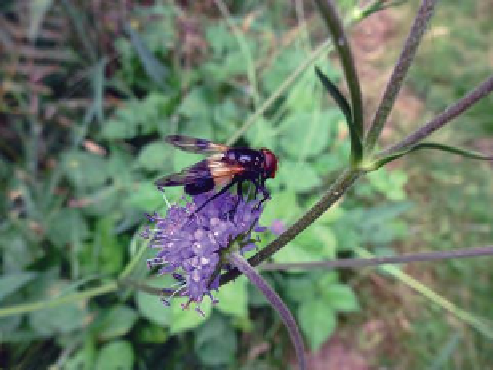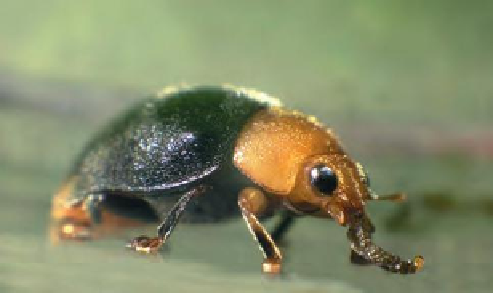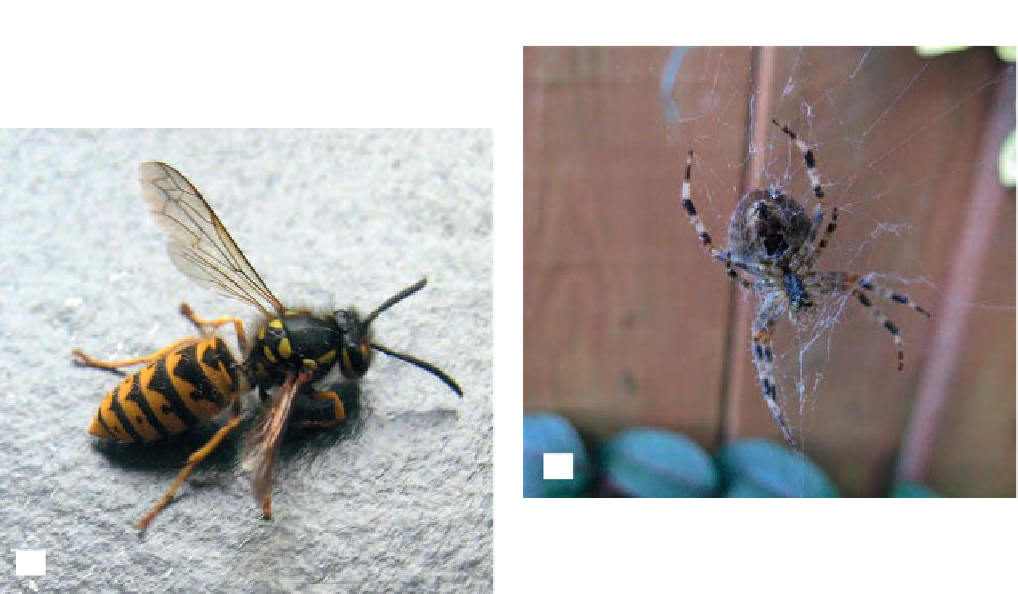Agriculture Reference
In-Depth Information
(c)
(a)
(d)
Figure 16.9
(a) Hoverfl y feeding on pollen; (b)
common wasp; (c) ladybird predator on mealy bugs
(courtesy of Bioline Ltd); (d) garden-web spider
(b)
Limitations of chemical control:
X
Products can be dangerous to humans, animals
and plants.
X
Products can cause resistant strains of pests,
diseases and weeds to develop.
Safe practice and environmental impact. In chemical
control, the
hazards
include the following possible
outcomes:
X
Development of strains of rodents, insects, mites
and fungi
resistant
to pesticides.
Risks
can be
minimized
by adhering carefully to the
following:
Risk
can be measured by the chances of
something happening and the level of
consequence if it did.
A
hazard
is something with the potential to do
harm.
X
Restricting chemical applications to only those
situations that justify such a control measure; in
many instances, other control measures may be
preferable and less harmful.
X
Choosing the least harmful chemical to effectively
control the problem organism.
X
Reading the instructions on the product label.
X
Choosing the correct clothing, where necessary.
X
Measuring the correct amount of concentrate
and water (where relevant) calculating (where
appropriate) the amount of pesticide and water
X
Acute
poisoning of humans, pets, farm animals,
bees and wild animals.
X
Accumulation
of pesticides that lead to toxic
levels in humans, pets, farm animals.
X
Cancer-inducing effects in human.
X
Damage to cultivated and wild plants, especially by
herbicides.
X
Contamination of streams and dams.






